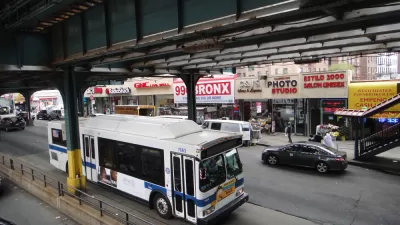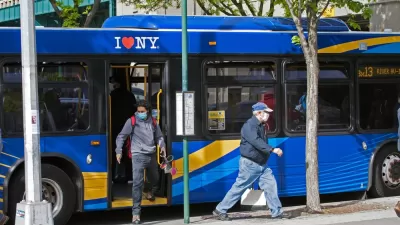An architect known as the Hip-Hop Architect explains how the planning decisions of the 20th century served as muse and breeding ground for the multi-million-dollar industry of hip hop.

Alice Kemp-Habib writes of the deep connections between 20th century traditions of urban planning and architecture and the birth of hip hop, with help from the lifetime of study on the subject by architect and designer Mike Ford.
Kemp-Habib describes the themes of urban living found throughout the history of hip hop, from its earliest beginnings trough its most famous figures:
Life in the so-called inner city has always been a major theme in hip-hop. From the desolate state of the Bronx Projects described in Grandmaster Flash’s “The Message” to the poor conditions in parts of Brooklyn and Queens recounted by artists like Jay Z, Biggie, and Nas, rappers have used their music to offer a glimpse into urban spaces across the United States…
The significance of the relationship between hip-hop and architecture and planning is the purview of Ford's work. Ford recently "became the lead architect for the Universal Hip Hop Museum, a Bronx-based project that seeks to celebrate and preserve the genre's history," and spoke with Kemp-Habib in describing the connection between the music and the city where it was first made.
According to Ford's argument, hip hop, a multi-billion-dollar industry, was born out of the "poor urban planning" of Robert Moses. According to Ford, Moses adopted the visions of Le Corbusier, but without the latter's concern for "social, political, and economic resources for residents." According to Ford, "Moses extracted the physical architecture [from Le Corb's concept] and ignored the rest."
In Ford's own words: "the projects — now completely void of amenities or employment opportunities and coupled with a pre-existing racial bias in America — literally and figuratively represented structural racism."
Ford explains more about how the projects in Bronx "necessitated the birth of hip-hop culture":
The lack of private space created a high concentration of people whose cultures cross-pollinated and resulted in the four elements of hip-hop: DJing, MCing, B-boying, and graffiti.
Ford also includes strong words about the exclusivity of planning and architecture education, and argues for the benefits of a more inclusive field, both in academia and in professional practice.
FULL STORY: How Bad Urban Planning Led To The Birth Of A Billion-Dollar Genre

Study: Maui’s Plan to Convert Vacation Rentals to Long-Term Housing Could Cause Nearly $1 Billion Economic Loss
The plan would reduce visitor accommodation by 25,% resulting in 1,900 jobs lost.

North Texas Transit Leaders Tout Benefits of TOD for Growing Region
At a summit focused on transit-oriented development, policymakers discussed how North Texas’ expanded light rail system can serve as a tool for economic growth.

Why Should We Subsidize Public Transportation?
Many public transit agencies face financial stress due to rising costs, declining fare revenue, and declining subsidies. Transit advocates must provide a strong business case for increasing public transit funding.

How to Make US Trains Faster
Changes to boarding platforms and a switch to electric trains could improve U.S. passenger rail service without the added cost of high-speed rail.

Columbia’s Revitalized ‘Loop’ Is a Hub for Local Entrepreneurs
A focus on small businesses is helping a commercial corridor in Columbia, Missouri thrive.

Invasive Insect Threatens Minnesota’s Ash Forests
The Emerald Ash Borer is a rapidly spreading invasive pest threatening Minnesota’s ash trees, and homeowners are encouraged to plant diverse replacement species, avoid moving ash firewood, and monitor for signs of infestation.
Urban Design for Planners 1: Software Tools
This six-course series explores essential urban design concepts using open source software and equips planners with the tools they need to participate fully in the urban design process.
Planning for Universal Design
Learn the tools for implementing Universal Design in planning regulations.
City of Santa Clarita
Ascent Environmental
Institute for Housing and Urban Development Studies (IHS)
City of Grandview
Harvard GSD Executive Education
Toledo-Lucas County Plan Commissions
Salt Lake City
NYU Wagner Graduate School of Public Service





























